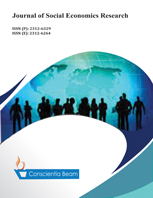What are the Contextual Influences of Bank Criminality in Osun East Senatorial District?
DOI:
https://doi.org/10.18488/journal.35.2019.62.188.201Abstract
The threats posed by bank criminality to nation building are such that an emerging nation such as Nigeria must not overlook. In spite of its negative implications, previous studies addressing the menace have either adopted the descriptive approach or focused majorly on reoccurrence of armed robbery during the festive periods. Also, there is a dearth of studies that employed the mix-methods approach and adopted the tripartite analysis technique to examine the causal effect association between bank criminality and its predictors. This study addresses these limitations by asking this question; what are the contextual influences of the various forms of bank criminality in Osun East Senatorial District? The outcome variable of the study was bank criminality, and the explanatory variables were contextual influences and broadly categorised into security mechanisms and human induced factors. Stata version 14 was employed in quantitative data analysis while the qualitative data was analysed using content analysis. Results showed that security mechanisms ( =17.502; p<0.001; =8.467; p<0.037; =11.09; p<0.004; =7.876; p<0.049; =16.233 p<0.001; =10.954; p<0.01) and human induced factors(ß = -0.226; t= -4.44; p<0.000; ß = 0.173; t=2.52; p<0.015; ß = 0.147; t=3.87; p<0.007; ß = -0.136; t= -2.56; p<0.013; ß = -0.206; t= -3.53; p<0.001) were predictors of bank criminality The study conclude that bank human induced factors, that is, bank employees’ efficiency and security mechanism functionality are indispensable to curtailing various forms of bank criminalities.

